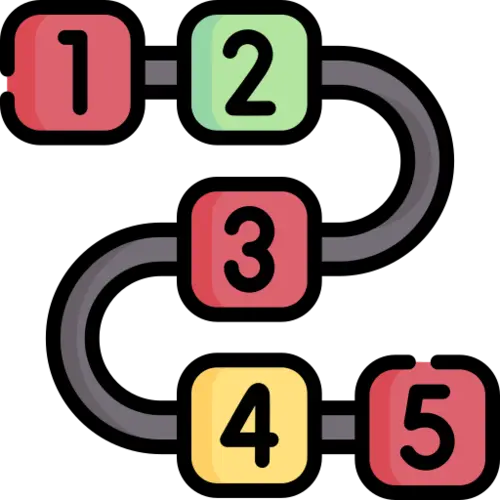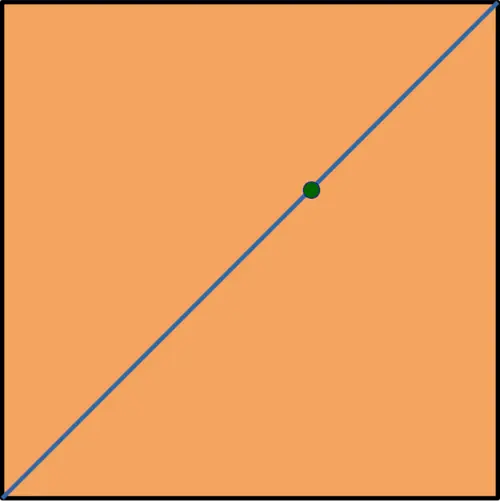Remote Controlled (RC) Airplane
Construction of a rc airplane
There are multiple ways to make a rc plane. The easiest one is to get it 3d printed if you have access to a 3d printer. Otherwise you can build it from scratch usin commonly available materials listed in .
RC plane model files for 3d printers
There are plenty of free and paid 3d models available online. I am listing a few for reference.
Materials required for manual construction
These are extensive list of materials people use for building a rc airplane model. You do not need all of them. Choose and select materials based on their availability.
- Depron/styrofoam/thermocol
- Sunboard/corrugated plastic/cardboard/balsa wood
- Stencil cutter
- Sandpaper
- Steel wire
- Fevicol
- Superglue/fevikwik
- Pen/pencil/marker
- Fibre tape
- Double sided tape
- Carbon fibre/fibre glass/wood stick
- Coupling nut
- Fiberglass/fibre mesh/carbon fiber cloth
- Epoxy resin
- Carbon fiber/aluminium/plastic tubes/pipes
- Birch plywood
3D modeling
Use Blender, AutoCAD, Solidworks to draw and visualize your RC airplane in 3 dimensions.
Moulding a RC plane
Attaching wings to fuselage
Electrical/Electronic components required
- High speed brushless dc (BLDC) motor
- Electronic speed controller (ESC)
- Servo motor
- LiPo battery
- LiPo battery charger
- Transmitter
- Receiver
- Soldering iron
- Hot glue gun
Resources for shopping electrical and electronic components
- Robu: This company also provides 3d printing and laser cutting service.
- Robocraze: I purchased FS-i6x transmitter with FSi-iA10B receiver, IMAX B6AC lipo charger, and a 2000 mAh l-po battery. I received my order in 2 days (including weekends) using DTDC courier service. The products were delivered in working conditions. The received IMAX lipo charger is a copy of the genuine model as per online research.
- Quadkart
- Indianrobostore
- Amazon
- Aliexpress
- Hobbyking
- Temu
- Banggood
Electronic speed controller (ESC)
An electronic speed controller (ESC) is a device that regulates the power delivered from the battery to an electric motor, controlling its speed, direction, and braking. In RC models, the ESC receives a signal from the transmitter via the receiver and adjusts the motor’s voltage and current accordingly. It converts the direct current from the battery into a three-phase output for brushless motors.
Servo motor
Servo motors are used to adjust ailerons. As this does not require high torque, you can use micro servos to reduce the overall weight of the airplane.
Transmitter
I purchased Flysky I6X 10 channel transmitter as it is cheap and is widely used by RC hobby community. The basic control functions—throttle, aileron, elevator, and rudder—are used to pilot planes, drones, or cars by moving the sticks, with throttle controlling speed and the other sticks controlling orientation. Dual rates and exponential (expo) let you adjust sensitivity: dual rates limit the maximum stick response for finer control, while expo smooths small movements near the center without affecting full stick travel. Mixing allows combining channels for functions like elevon (ailerons + elevator) or rudder-to-aileron, simplifying complex maneuvers. The model memory function stores multiple setups so users can switch between aircraft or vehicles without reprogramming. Trims let you fine-tune stick centers for straight, level flight, and programmable curves allow custom response for throttle or control surfaces, giving smoother acceleration or nuanced control. The trainer function connects a second transmitter for instruction or dual control, while reversing channel direction corrects servo orientation without rewiring. Using the LCD menu interface, pilots can navigate these settings, calibrate sticks, and adjust endpoints, making the i6X flexible for beginners and advanced users alike.
Setting up Flysky FS-I6X transmitter
Dual rate feature on Flysky FS-I6X transmitter
The dual rate and exponential (expo) function on the FlySky FS-I6X lets you fine-tune how sensitive your controls feel. Dual rate adjusts the total travel of a control surface — lowering it makes the sticks less responsive and limits how far the servos move, giving smoother control for beginners or stable flight. Exponential changes how the stick response behaves around the center; adding negative expo softens inputs near the middle while keeping full movement at the extremes, which helps with precise maneuvers and takeoffs. Together, these settings let you balance stability and agility — use lower rates and more expo for relaxed flying, or higher rates with less expo for fast, aggressive control.
On the FlySky FS-I6X, user can define sport and normal modes using the dual rate and expo settings. In normal mode, the dual rates are reduced and more expo is applied, making the controls smoother and less sensitive—ideal for stable flight, takeoff, or landing. In sport mode, higher dual rates and little or no expo are used, giving quicker and more responsive control for aerobatic or aggressive flying. These two setups are usually assigned to a switch, allowing instant switching between relaxed and high-performance handling during flight.
Elevon feature on Flysky FS-I6X transmitter
The elevon feature on the FlySky FS-I6X is used for flying wings or delta-wing aircraft that don’t have separate elevator and aileron controls. In this setup, the same pair of control surfaces act as both elevators and ailerons — moving together for pitch and in opposite directions for roll. The elevon mix in the transmitter combines the elevator and aileron inputs to control these surfaces correctly. You can turn the feature on from the function setup menu and adjust the mixing percentages to balance pitch and roll response. The FS-I6X’s elevon mix is straightforward and linear, without advanced curve control, so proper mechanical alignment, sub-trim, and endpoint adjustment are essential for smooth, balanced flight.
AUX switches on Flysky FS-I6X transmitter
Aux switches can be used to set up different characterisitcs of channel for sports and normal mode. These can also be used as a kill switch in case of a crash or for debugging your airplane while the battery is still conected to the motors.
LiPo battery charger
There are varieties of LiPo charger available in the market. The most common ones are IMAX B6 and Tenergy TB6B.
I purchased IMAX B6AC as there are cheaper copies available in the market easily. The iMax B6AC LiPo charger is a versatile device for safely charging, discharging, and balancing LiPo and other battery types. To use it, first connect the charger to a power source and attach the battery to the appropriate output port, ensuring correct polarity. Select the battery type and cell count using the menu buttons, then set the charge current according to the battery’s capacity, typically 1C or lower. For LiPo batteries, enable the balance mode to ensure all cells charge evenly. Start the charging process and monitor the display, which shows voltage, current, and progress. After charging completes, disconnect the battery carefully, and if needed, use the charger’s discharge or storage modes to maintain battery health. Always follow safety precautions, such as charging on a non-flammable surface and never leaving batteries unattended.
Debugging
Jitters in BLDC motor
If a BLDC motor jitters due to a loose connection, it happens because the ESC loses one of the three phase signals needed for proper commutation. With an incomplete or unstable connection, the magnetic field sequence breaks, causing the rotor to vibrate or twitch instead of spinning smoothly. This often comes with clicking noises or ESC overheating. The fix is to disconnect the power, inspect all three motor-to-ESC connections, and ensure each wire is tightly secured, clean, and properly soldered or crimped. Bullet connectors should fit snugly, and solder joints should be reflowed if they look dull or cracked. Loose or intermittent connections can damage the ESC, so it’s important to secure the wiring firmly to prevent vibration or movement during operation.
Jitters in servo motor
Servo motor jitter occurs when the control signal or power supply is unstable. It usually happens due to voltage fluctuations, electrical noise, or interference in the PWM signal. When the servo receives inconsistent power or a noisy signal, it keeps correcting its position, causing constant twitching. A missing common ground between the servo and controller can also lead to erratic movement. Mechanical resistance or overloaded linkages make the motor hunt for position, adding to the jitter. If multiple servos share a weak power source, sudden current drops can make all of them twitch simultaneously. In some cases, worn-out feedback potentiometers inside analog servos cause random jitter. The best fix is to use a stable 5–6 V power source with sufficient current, ensure a solid common ground, keep signal wires short and clean, and check for free mechanical movement.
Another cause of jittering is RF interference. RF interference in servo motors happens when nearby radio signals disrupt the PWM control line or the servo’s internal electronics. This interference causes random twitching, jittering, or sudden movements even when no command is sent. It’s common in setups using high-power transmitters, long unshielded signal wires, or poor grounding. The interference induces stray voltages on the servo line, which the servo interprets as position changes. To fix it, keep signal wires short and twisted, use ferrite beads on the servo leads, and route cables away from high-current or RF sources like transmitters, ESCs, or antennas. Shielding the control wires with grounded foil or braided sleeve also helps. A strong, stable power supply and common ground between all components reduce the servo’s sensitivity to RF noise.
Airplane control
Take-off
Keep the elevons on the wing slightly downward and elevator slightly upward. This will ensure that the airplane points upward during take off.
Author
Anurag Gupta is an M.S. graduate in Electrical and Computer Engineering from Cornell University. He also holds an M.Tech degree in Systems and Control Engineering and a B.Tech degree in Electrical Engineering from the Indian Institute of Technology, Bombay.
Comment
This policy contains information about your privacy. By posting, you are declaring that you understand this policy:
- Your name, rating, website address, town, country, state and comment will be publicly displayed if entered.
- Aside from the data entered into these form fields, other stored data about your comment will include:
- Your IP address (not displayed)
- The time/date of your submission (displayed)
- Your email address will not be shared. It is collected for only two reasons:
- Administrative purposes, should a need to contact you arise.
- To inform you of new comments, should you subscribe to receive notifications.
- A cookie may be set on your computer. This is used to remember your inputs. It will expire by itself.
This policy is subject to change at any time and without notice.
These terms and conditions contain rules about posting comments. By submitting a comment, you are declaring that you agree with these rules:
- Although the administrator will attempt to moderate comments, it is impossible for every comment to have been moderated at any given time.
- You acknowledge that all comments express the views and opinions of the original author and not those of the administrator.
- You agree not to post any material which is knowingly false, obscene, hateful, threatening, harassing or invasive of a person's privacy.
- The administrator has the right to edit, move or remove any comment for any reason and without notice.
Failure to comply with these rules may result in being banned from submitting further comments.
These terms and conditions are subject to change at any time and without notice.
Similar content






Past Comments